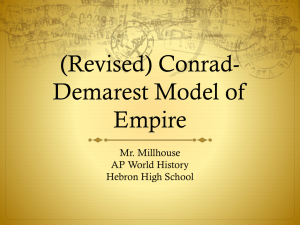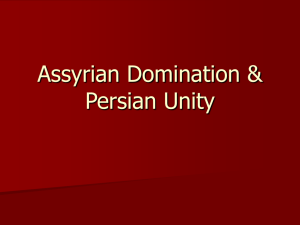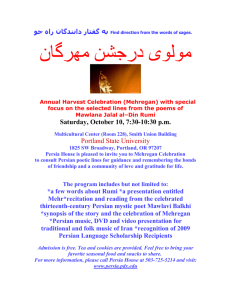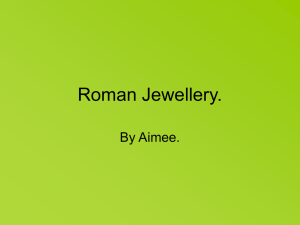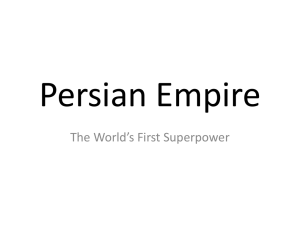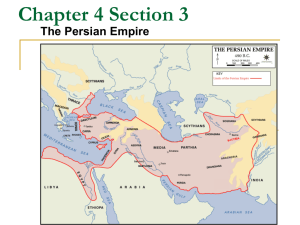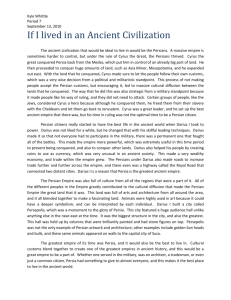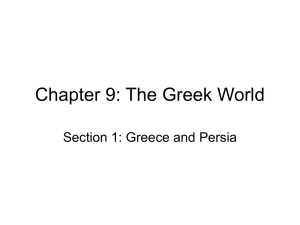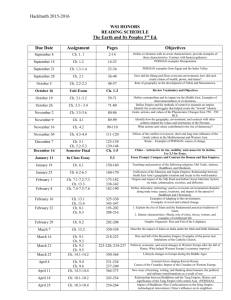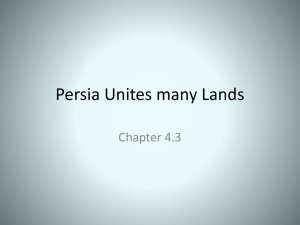As an archaeologist it is your job to find out more
advertisement
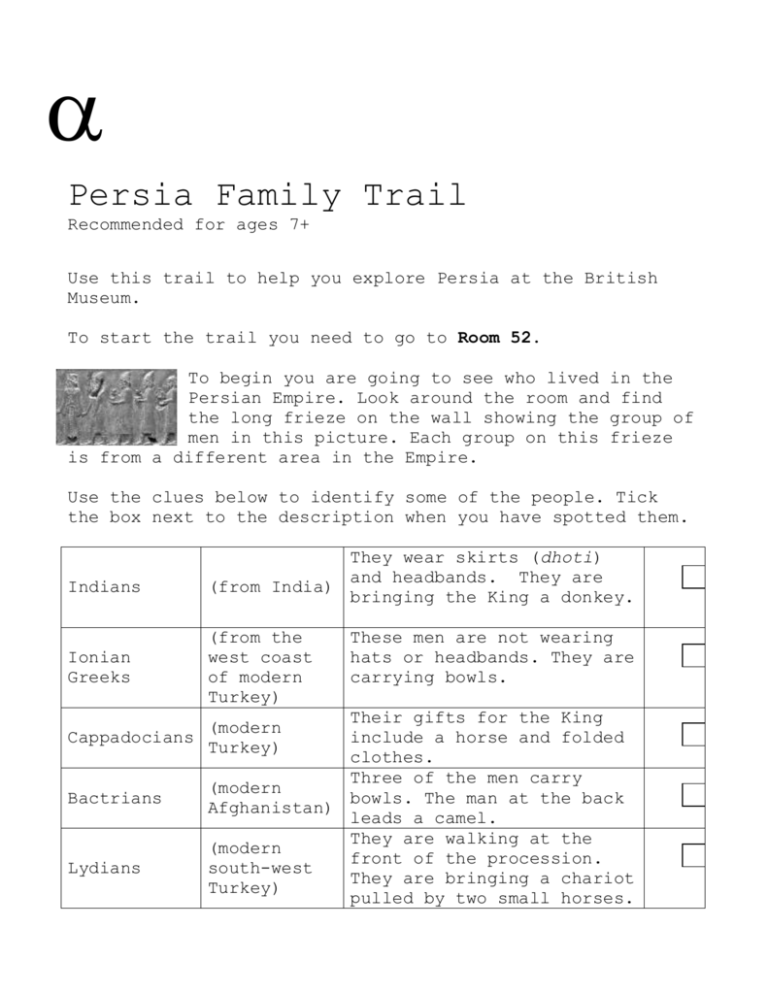
Persia Family Trail Recommended for ages 7+ Use this trail to help you explore Persia at the British Museum. To start the trail you need to go to Room 52. To begin you are going to see who lived in the Persian Empire. Look around the room and find the long frieze on the wall showing the group of men in this picture. Each group on this frieze is from a different area in the Empire. Use the clues below to identify some of the people. Tick the box next to the description when you have spotted them. Indians Ionian Greeks They wear skirts (dhoti) and headbands. They are (from India) bringing the King a donkey. (from the west coast of modern Turkey) Their gifts for the King include a horse and folded clothes. Three of the men carry (modern bowls. The man at the back Afghanistan) leads a camel. They are walking at the (modern front of the procession. south-west They are bringing a chariot Turkey) pulled by two small horses. (modern Cappadocians Turkey) Bactrians Lydians These men are not wearing hats or headbands. They are carrying bowls. Did you know the ancient Persian Empire covered over 3 million square miles? Now find Case 5. In this case are sculptures showing the soldiers and bodyguards who protected the King of Persia. Draw a soldier’s head so that you have a record of what you’ve seen. King Darius had 10,000 bodyguards. They were called the Immortals because if one died another solider would immediately take their place and protect the King. Move to Case 4. It is a small case with a single object in it. This object is called the ‘Cyrus Cylinder’. The writing on it describes how the Persian King, Cyrus, defeated Babylon and made it part of the Persian Empire. It says that Cyrus allowed prisoners of Babylon to go back to their homes and to worship their own gods. The writing on the object is Babylonian cuneiform and is different from the writing the Persians used. What does the writing look like to you? Try to copy some of the cuneiform in the space below. Now go to Case 3. In this case there are lots of containers made from gold and silver. These were used by the King and his guests at banquets. What do you think each container was used for? Look at the foods listed below and choose a container suitable for each one. grapes bread water wine dates Now look at the jewellery in this case. Jewellery was worn by both men and women. The examples in this case were expensive but simple, cheaper jewellery was also available. Look find from body at the pictures of jewellery below and see if you can each one in the case. When you find one draw a line the picture to the place where it was worn using the outline below. Choose your favourite piece of jewellery and read the words below. Circle the ones you feel describe it. pretty impressive silver rich delicate smooth decorated colourful gold plain large rough expensive bright Now you are going to travel to see examples of Persian paintings. Go to Room 34 (by the North entrance to the Museum). Help your adult to find Room 34 on a map so you know where you are going, if you get lost ask a member of staff to direct you. In the central area of Room 34 is a display of paintings called The Good, the Bad and the Ugly: Fantastic Creatures in Islamic Painting. The creatures shown in these paintings are from ancient legends and stories. Look at some of the paintings. How many of the following animals and creatures can you see? cheetah camel dragon scorpion vulture rabbit horse monkey duck fish phoenix owl lion crow tiger dove elephant dog goat donkey Choose one of the animals or creatures and draw a picture of it below. Generously www.magicofpersia.com supported by
